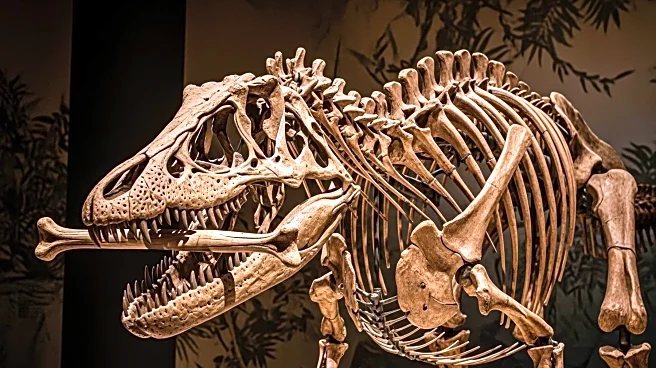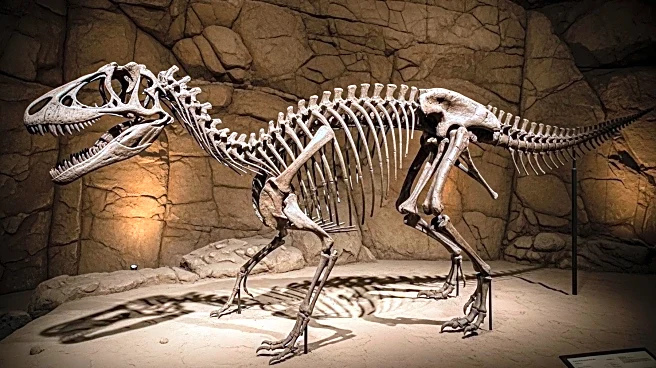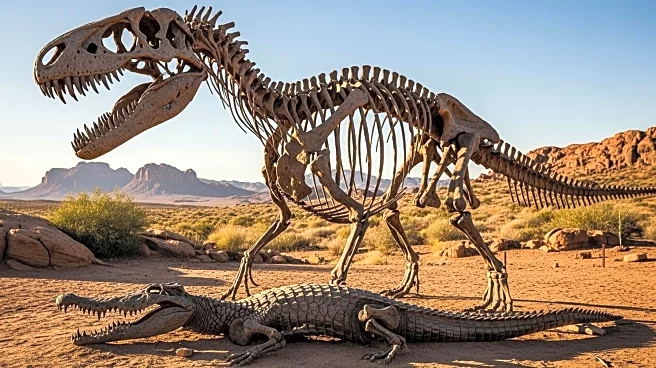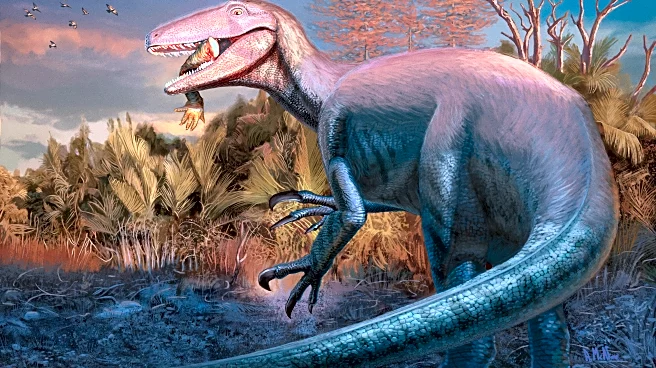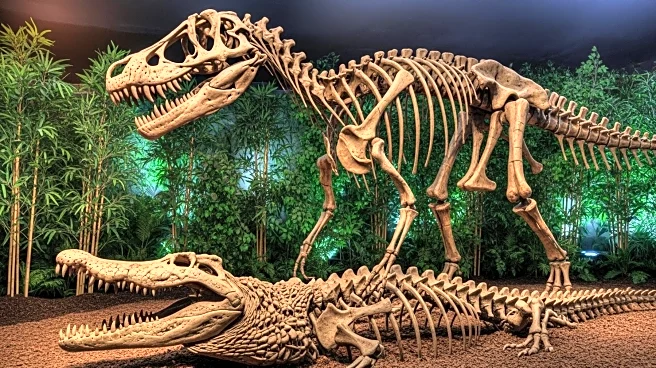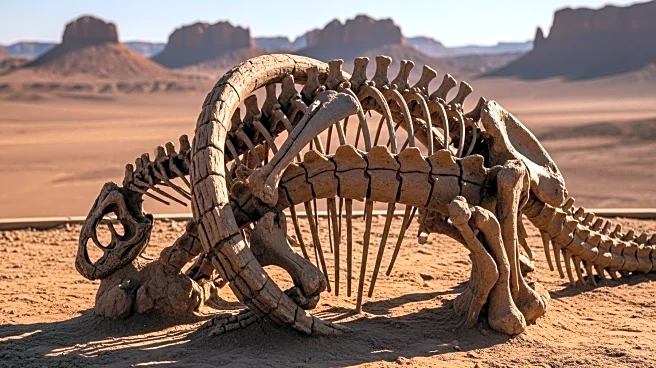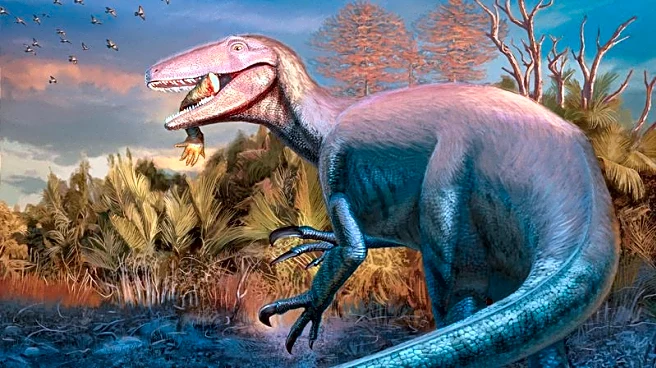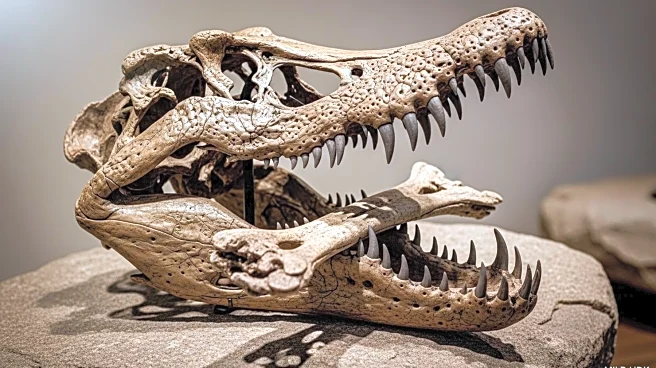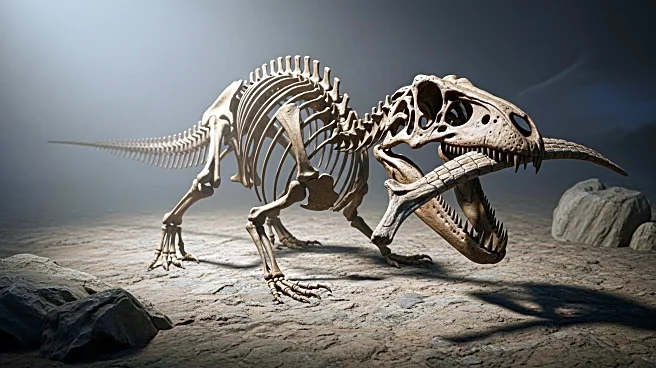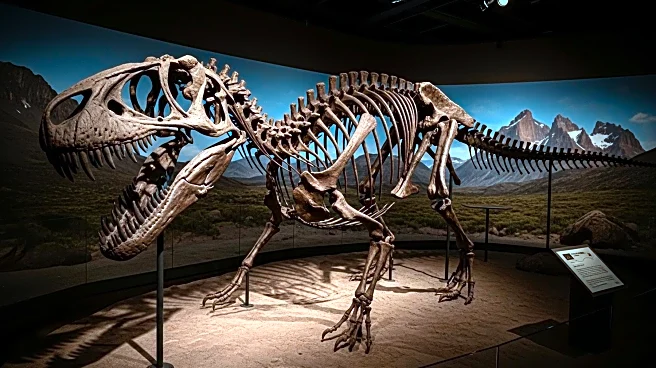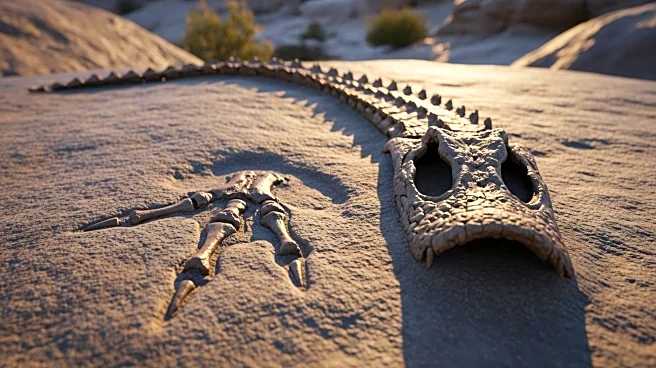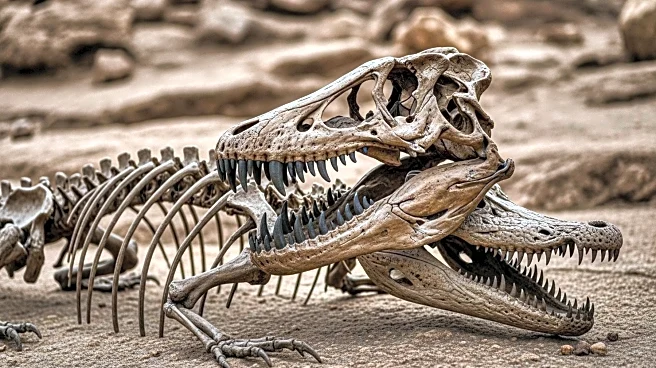What is the story about?
What's Happening?
Researchers have uncovered a new dinosaur species, Joaquinraptor casali, in Argentina, characterized by its powerful claws and a crocodile bone found in its mouth. This dinosaur, part of the megaraptoran group, was approximately 23 feet long and lived between 66 and 70 million years ago. The discovery includes parts of a skull, arm, leg, and tail bones from the Lago Colhué Huapi rock formation in Patagonia. The unique features of the bones suggest it is a new species, providing one of the most complete skeletons of megaraptorans to date. The dinosaur was named in memory of the lead scientist's son, Joaquin.
Why It's Important?
The discovery of Joaquinraptor casali is crucial for understanding the evolutionary history of megaraptorans, a group of dinosaurs known for their stretched-out skulls and powerful claws. This finding offers insights into the predatory behavior and ecological role of these dinosaurs, potentially revealing their position as top predators in prehistoric flood plains. The research enhances the understanding of dinosaur biodiversity and the dynamics of ancient ecosystems, contributing to the broader knowledge of the Late Cretaceous period.
What's Next?
Further research may focus on analyzing the fossil to uncover more details about the diet and hunting strategies of Joaquinraptor casali. Scientists might investigate the implications of this discovery on the evolutionary timeline of megaraptorans and their extinction patterns. The study could lead to additional excavations in Patagonia to find more specimens and refine the understanding of megaraptoran diversity and distribution.
Beyond the Headlines
The naming of Joaquinraptor casali reflects the intersection of scientific discovery and personal tribute, as Lucio Ibiricu honors his son through this significant paleontological find. This act highlights the emotional and cultural dimensions of scientific work, demonstrating how personal stories can be woven into academic achievements.
AI Generated Content
Do you find this article useful?
